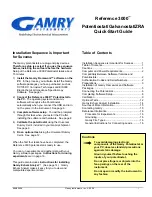
Copyright Velocomp LLP 2008-2017
25
TIME ADVANTAGE
Time Advantage™ is another metric, related to CdA, exclusive to the
PowerPod/Newton/DFPM combination.
What is Time Advantage?
When you ride a bike, most of the time you’re riding in your “normal” riding position.
DEFINITION
: YOUR “NORMAL RIDING POSITION” IS THE POSITION YOU HELD WHILE
PERFORMING THE OUT AND BACK CALIBRATION RIDE WITH YOUR DFPM.
As long as you stay in your normal riding position, the total amount of time it takes to
complete your training ride is unaffected by your riding position; that is, your “normal”
riding position gives a “normal” training time.
Now, suppose you’re on a ride and you have deviated from your normal riding position for
a portion of your ride, say, by going into a tuck. Did going into a tuck save you time
compared to staying in your normal riding position? Clearly, the answer is “yes”, but
how
much time did you save
?
Here’s another situation: you attacked a hill and stood up to get more power. You know
that “standing up” is less aerodynamically efficient and costs you some time.
How much
extra time did it take to climb the hill due to aerodynamic inefficiencies?
A final situation: you’ve perfected your “normal” ride position using your PowerPod or
Newton. During a long ride, however, you get tired and your ride position becomes a bit
sloppy.
How much longer did it take you to complete your ride because your ride position
became worse?
Time Advantage answers all these questions, and more.
DEFINITION
: AT ANY POINT OF YOUR RIDE, “TIME ADVANTAGE” IS THE CUMULATIVE
AMOUNT OF TIME YOU HAVE GAINED (OR LOST), DUE TO DEVIATIONS FROM YOUR
NORMAL RIDE POSITION.
Time advantage is measured in seconds. Suppose you look at your Newton at mile 6.2 of
your ride and Time Advantage reads a positive 30. This means that, at mile 6.2 of your
ride, you have
gained
30 seconds of time,
relative to your “normal” riding time
, because of
moment-to-moment improvements of your normal riding position. Alternative if, instead,
your Time Advantage reads -15, the way you have changed ride positions means that
you’ve
lost
fifteen seconds compared to staying in your normal riding position.
How are Continuous CdA and Time Advantage related?
If your current value CdA is higher than your baseline CdA then you are relatively less
aerodynamically efficient compared to your normal riding position and, for the same
amount of applied force, you won’t go as fast. Conversely, if your current CdA is lower
than your normal value then you are MORE aerodynamic and you’ll go faster compared to
your normal riding position.








































